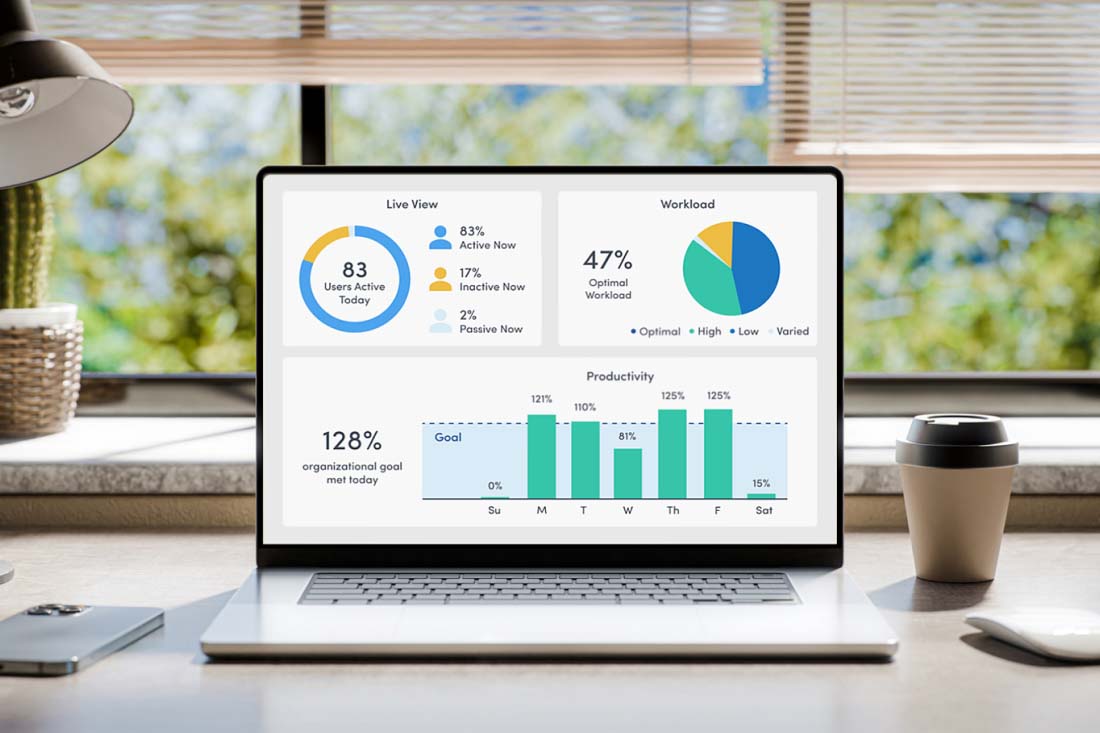People analytics is quickly becoming table stakes for organizations that want to stay competitive. Also known as HR analytics or workforce analytics, people analytics refers to data and statistical methods to analyze and interpret a wide range of employee information. Learn how using this data empowers your business to make data-based decisions, drives employee engagement, improves productivity and enhances organizational performance.
Definition and importance of people analytics
People analytics is the practice of using data and analytics to make informed decisions about your workforce. By using people analytics, you gain insights into employee behavior, preferences and performance to understand your workforce better and make data-driven decisions that can set your organization apart.
The benefits of people analytics go beyond a more organized talent management or recruiting infrastructure. Studies increasingly show organizations that embrace people analytics have a competitive edge. According to Deloitte, high-performing organizations are “2.6x more likely to treat data and analytics as core assets that create a competitive advantage” and “2.1x more likely to communicate the importance of data-driven decisions” than low-performing organizations.
But what exactly does people analytics entail? It goes beyond collecting HR metrics. It involves using advanced analytics solutions to uncover hidden insights and correlations. For example, by analyzing employee turnover rates alongside performance reviews, organizations can identify potential factors contributing to high turnover and develop strategies to address them. This level of analysis allows HR professionals to make evidence-based decisions that directly impact employee satisfaction and retention.
9 steps to start using people analytics
Starting a people analytics program begins with clearly defining your organization’s overall goals and objectives. Human resource goals must align with organizational goals to ensure that your insights drive actionable outcomes that aren’t siloed to the HR department and can resonate throughout your business to improve the bottom line. While every organization has its own people analytics needs, these nine general steps will help your organization get started.
1. Identify your people analytics goals
The first step to any new business strategy is to determine what you want the outcome to be. For people analytics, you may want to reduce turnover, optimize new hire onboarding, create better talent and development programs or increase your competitiveness in recruiting. Set clear, realistic objectives so you know what problems you’re solving for and what information you need to make the best decisions. For instance, many organizations use HR analytics to inform their policies on remote work based on productivity metrics rather than guesswork or intuition.
2. Assemble your people analytics team
For your new people analytics strategy to work, you need team members responsible for creating and maintaining data collection systems, performing data analysis, presenting findings and creating and communicating new strategies to your organization. But you also need to ensure your business leaders are on board with the strategy so they can champion the project. Remember that people analytics will affect more than HR systems and, if implemented properly, will create change throughout your organization. Employees, managers and upper management all need to be part of the analytics team on some level.
3. Decide what data you need to collect
There’s a good chance you already have employee data available from existing data sources, such as time-to-hire, working hours/overtime or retention rates. With your new people analytics goals in mind, determine what other data you want to collect. Some examples include individual performance and team productivity metrics, engagement data and employee sentiment. Define your data points based on your goals to avoid data overload. Another important aspect of data collection is to decide what time periods you want to analyze and compare.
4. Determine the tools you need to collect and analyze data
Manual data collection tools can only take you so far. New HR workforce analytics tools are available to collect appropriate data, correlate across systems and create useful analysis to inform your decision-making. The best HR analytics tools should include large data handling, the ability to perform complex calculations and produce easy-to-understand insights. Consultants and data analytics experts can guide your search and help your team through implementation and maintenance issues. It’s a good idea to select tools that all team members can access so that everyone is empowered to use the data to increase their productivity, experience or engagement.
5. Gather and analyze people data
Once you’ve determined what people analytics tools you need, it’s time to put them to work. Ensure the tools have access to the data sources they need to function properly, including workforce collaboration apps, performance management tools, timekeeping sources and talent management and recruiting tools. Make sure your collection methods align with privacy laws and data regulations and that employee privacy is kept confidential. At the same time, your analysis needs to provide meaningful insight that can inform policies and strategies. This means timely, easy-to-read executive dashboards that present the information in usable ways.
6. Use data to identify trends
Use data analytics to identify trends in your workforce such as productivity statistics, retention rates, engagement metrics and more. The data will show gaps and opportunities in your HR processes. Compare current trends with your HR and organizational goals to see where tools, processes or policies need to be updated. Empower managers with people analytics to measure how changes affect employee performance over time, so your team easily sees what works and what doesn’t.
7. Communicate people analytics results
Effective strategy relies on effective communication. Analytics teams need to communicate their findings to HR and organizational leaders as well as individual contributors for meaningful change to take place. Based on your goals and data collection policies, this communication should be regular and timely. Good data analytics will tell a meaningful story to inform decisions across your business processes. Backed by the right data and analytics, policy and strategy decisions make more sense for every member of the organization, which makes them more likely to adopt new procedures or tools. At the same time, allow employees and other team members to communicate how the new system works for them or any suggestions they have for improving processes.
8. Implement people analytics changes
Once you have a people analytics system in place, use it to create meaningful changes to business processes throughout your organization. Create a clear roadmap that includes information on where your HR strategy is now, where you want it to be and how you’ll get there. Encourage data-based decision-making across departments by making the information available to stakeholders and individual contributors. Robust and regular communication will encourage buy-in from all levels of the team and reinforce changes.
9. Monitor and amend your strategy
People analytics is not a one-time project, and your organization will need to incorporate it across departments and teams. Use the information you gather to determine when the strategy needs to be tweaked, such as when goals aren’t met or you get unexpected results. With the right strategy in place, your organization will gain more flexibility to respond to unexpected situations in the future. As your HR strategy evolves, your people analytics strategy will, too.
Start using ActivTrak’s people analytics software
Unlock the full potential of your human resources processes and transform your organization’s approach to workforce management with ActivTrak’s robust HR workforce analytics platform. Get deep insights into employee productivity and well-being combined with other people data to create competitive strategies. Whether you’re managing a hybrid or remote workforce, looking to monitor and measure productivity or aiming to improve employee engagement, our platform has the tools you need.
Take the first step towards optimizing your HR practices and driving business success. Request a demo today to get started or to learn more about how ActivTrak can benefit your organization.





